
The striped bass, also called the Atlantic striped bass, striper, linesider, rock, or rockfish, is an anadromous perciform fish of the family Moronidae found primarily along the Atlantic coast of North America. It has also been widely introduced into inland recreational fisheries across the United States. Striped bass found in the Gulf of Mexico are a separate strain referred to as Gulf Coast striped bass.

Mount Vernon is the former residence and plantation of George Washington, a Founding Father, commander of the Continental Army in the Revolutionary War, and the first president of the United States, and his wife, Martha. An American landmark, the estate lies on the banks of the Potomac River in Fairfax County, Virginia, approximately 15 miles south of Washington, D.C..
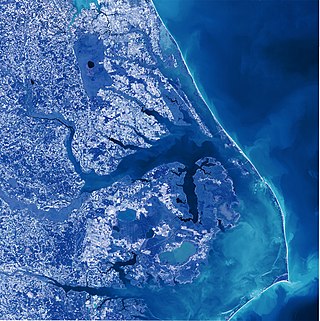
Albemarle Sound is a large estuary on the coast of North Carolina in the United States located at the confluence of a group of rivers, including the Chowan and Roanoke. It is separated from the Atlantic Ocean by the Currituck Banks, a barrier peninsula upon which the town of Kitty Hawk is located, at the eastern edge of the sound, and part of the greater Outer Banks region. Roanoke Island is situated at the southeastern corner of the sound, where it connects to Pamlico Sound. Much of the water in the Albemarle Sound is brackish or fresh, as opposed to the saltwater of the ocean, as a result of river water pouring into the sound.

The American shad is a species of anadromous clupeid fish naturally distributed on the North American coast of the North Atlantic, from Newfoundland to Florida, and as an introduced species on the North Pacific coast. The American shad is not closely related to the other North American shads. Rather, it seems to form a lineage that diverged from a common ancestor of the European taxa before these diversified.

Alosa is a genus of fish, the river herrings, in the family Alosidae. Along with other genera in the subfamily Alosinae, they are generally known as shads. They are distinct from other herrings by having a deeper body and spawning in rivers. Several species can be found on both sides of the Atlantic Ocean and the Mediterranean Sea. Also, several taxa occur in the brackish-water Caspian Sea and the Black Sea basin. Many are found in fresh water during spawning and some are only found in landlocked fresh water.

Mattawoman Creek is a 30.0-mile-long (48.3 km) coastal-plain tributary to the tidal Potomac River with a mouth at Indian Head, Maryland, 20 miles (32 km) downstream of Washington, D.C. It comprises a 23-mile (37 km) river flowing through Prince George's and Charles counties and a 7-mile (11 km) tidal-freshwater estuary in Charles County. About three-fourths of its 94-square-mile (240 km2) watershed lies in Charles County, with the remainder in Prince George's County immediately to the north.
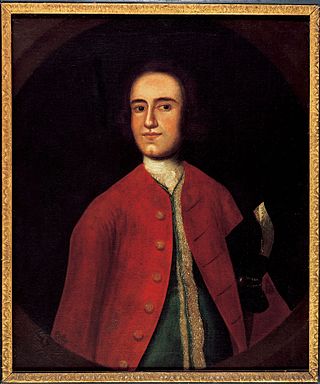
Lawrence Washington was an American soldier, planter, politician, and prominent landowner in colonial Virginia. As a founding member of the Ohio Company of Virginia, and a member of the colonial legislature representing Fairfax County, Virginia, he founded the town of Alexandria, Virginia on the banks of the Potomac River in 1749.
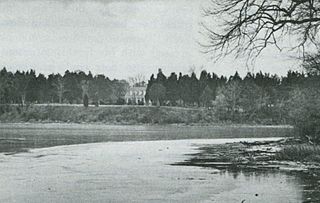
Pope's Creek is a 5.3-mile-long (8.5 km) tidal tributary of the Potomac River in Westmoreland County, Virginia. The George Washington Birthplace National Monument lies along the north side of Popes Creek. Popes Creek landing is located at 38°11′29″N76°54′16″W.

Little Hunting Creek is a 3.6-mile-long (5.8 km) primarily tidal tributary of the Potomac River located in Fairfax County, Virginia, not to be confused with Hunting Creek farther north. A stone-arch bridge, completed in 1931, carries traffic on the George Washington Memorial Parkway across the narrow mouth of the creek, located 96.6 miles (155.5 km) upriver from the mouth of the Potomac. The Washington family built its Mount Vernon plantation on the Potomac River along both banks of Little Hunting Creek during colonial times. The creek is bordered by residential communities in addition to the Mount Vernon property. It is a popular location for recreational fishing, and much of the wildlife characteristic of the tidal Potomac wetlands can be spotted there.
The hickory shad, fall herring, mattowacca, freshwater taylor or bonejack is a member of the family Alosidae, ranging along the East Coast of the United States from Florida to the Gulf of Maine. It is an anadromous fish species, meaning that it spawns in freshwater portions of rivers, but spends most of its life at sea. It is subject to fishing, both historic and current, but it is often confused with or simply grouped together with American shad in catch statistics.
This page is a list of fishing topics.
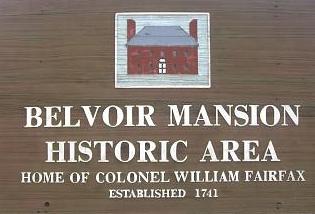
Belvoir was the plantation and estate of colonial Virginia's prominent William Fairfax family. Operated with the forced labor of enslaved people, it was located on the west bank of the Potomac River on the present site of Fort Belvoir in Fairfax County, Virginia.

George Washington's Gristmill was part of the original Mount Vernon plantation, constructed during the lifetime of the United States' first president. The original structure was destroyed about 1850. The Commonwealth of Virginia and the Mount Vernon Ladies’ Association have reconstructed the gristmill and the adjacent distillery. The reconstructed buildings are located at their original site three miles (4.8 km) west of the Mount Vernon mansion near Woodlawn Plantation in the Mont Vernon area of Fairfax County. Because the reconstructed buildings embody the distinctive characteristics of late eighteenth century methods of production and are of importance to the history of Virginia, the site is listed on the National Register of Historic Places despite the fact that the buildings are not original.

Shad is a type of fish, much valued as a sport fish. The male shad is an excellent game fish, showing multiple jumps and an occasional end-over-end; it has been called a "freshwater tarpon". The gravid female does not fight much, but is often kept for the roe. The current world record is listed by the IGFA as 11 pounds 4 ounces (5.1 kg), set at Holyoke Dam, Massachusetts, on 19 May 1986 by Robert A. Thibodo.

The blueback herring, blueback shad, or summer shad is an anadromous species of herring from the east coast of North America, with a range from Nova Scotia to Florida. Blueback herring form schools and are believed to migrate offshore to overwinter near the bottom.
Giller is a 19th-century term for a person who fishes using a gillnet, as used in the Chesapeake Bay region from the early 19th to the mid-20th centuries. Gillers worked individually or in groups of two or three men using a small boat from which they set and gathered a gillnet. Gillnets first appeared on the Potomac River in 1838 to fish for American shad, and rapidly became the most popular type of fishing gear in the bay region because they allowed the independent fisherman to work with limited resources, following the fish with his boat and net as they moved from place to place in search of food or to spawn. Gillnet fishing in Chesapeake Bay shad fisheries frequently led to conflict among states bordering the bay, with Pennsylvania seiners blaming Maryland gillers for over-harvesting and blocking shad passage upstream into the Susquehanna River, and Maryland gillers blaming Virginia pound-netters for intercepting fish on their northward migration up the bay. Conflicts sometimes erupted into violent confrontations, called "Gillers Wars," during one of which in 1876, a giller in Charles County, Maryland was indicted by the county court for assault with intent to kill the captains of a steamer and a tug. Upon trial he was found not guilty, but his case evidences the extent of the trouble between gillnetters and other bay users that led to involvement by state authorities in regulating fishing and settling disputes involving gillers.
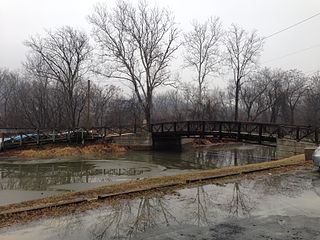
Fletcher's Cove is a park and recreation area owned and managed by the National Park Service, located at 4940 Canal Road, Washington, D.C. 20007, between Chain and Key Bridges, part of Chesapeake and Ohio Canal National Historical Park.
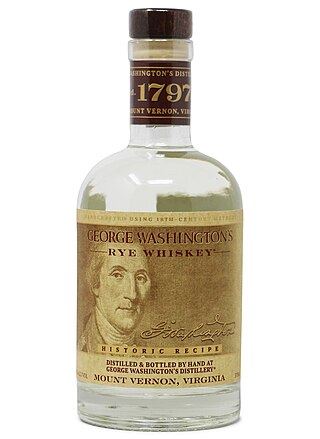
George Washington's Rye Whiskey is distilled at George Washington's reconstructed distillery at Mount Vernon from a recipe discovered by scholars examining the distillery ledgers for 1798 and 1799. It is distilled in limited quantities and only available for purchase in person. In 1797, urged on by his farm manager, James Anderson, Washington ramped up production and it produced 600 gallons. In 1799, the year Washington died, the distillery produced nearly 11,000 gallons, making it the largest whiskey distillery in America at that time.

Caroline Branham was an enslaved housemaid and seamstress of George and Martha Washington. She was married to Washington's hired groomsman Peter Hardiman, whose slaveholder was David Stuart. Branham gave birth to nine children, seven with Hardiman. Her son, Austin (1798-1879), and her ninth child, Lucy, are believed to have been a child of the plantation; the boy's and girl's father was George Washington Parke Custis. Branham served the Washington family and their many visitors, ensuring they resided comfortably.
Richard Conway was a politician, shipowner, and merchant in Colonial Virginia who served as the fourth mayor of Alexandria, Virginia.













